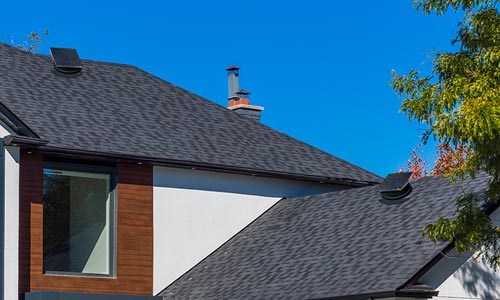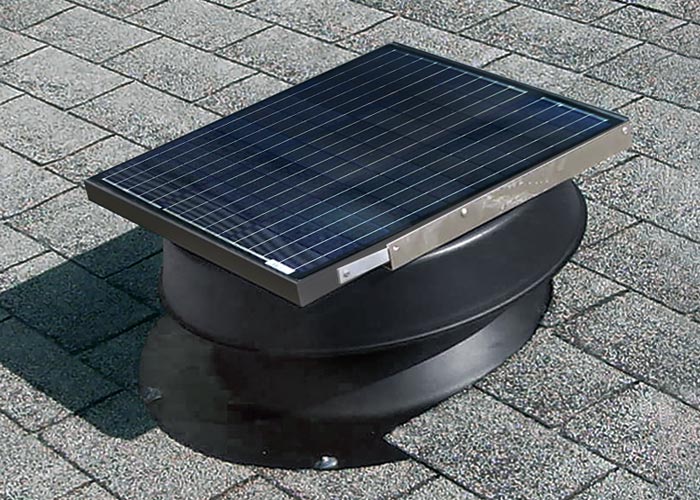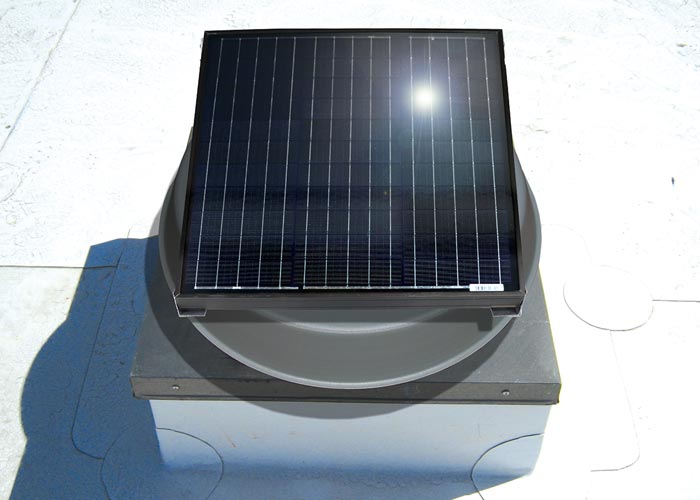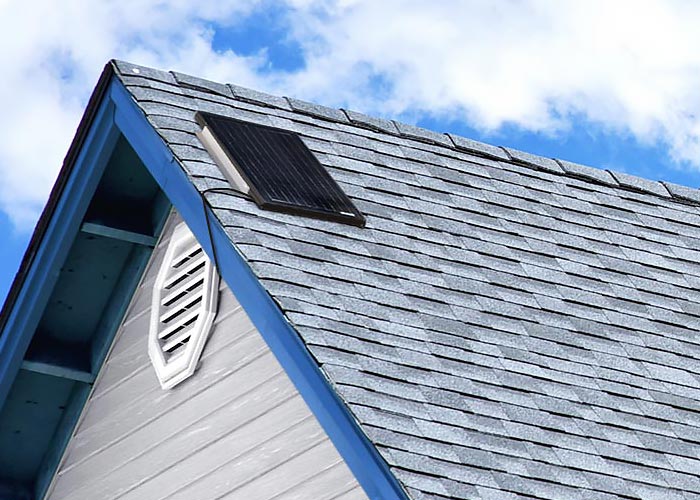Smart, Eco-Friendly Home Solution
Installing a Kennedy Solar Attic Fan venting system is a simple and environmentally sensible solution that can protect your home, extend the life of your roof and even save you money. Solar attic fans improve attic air circulation resulting in a healthy, energy efficient home.
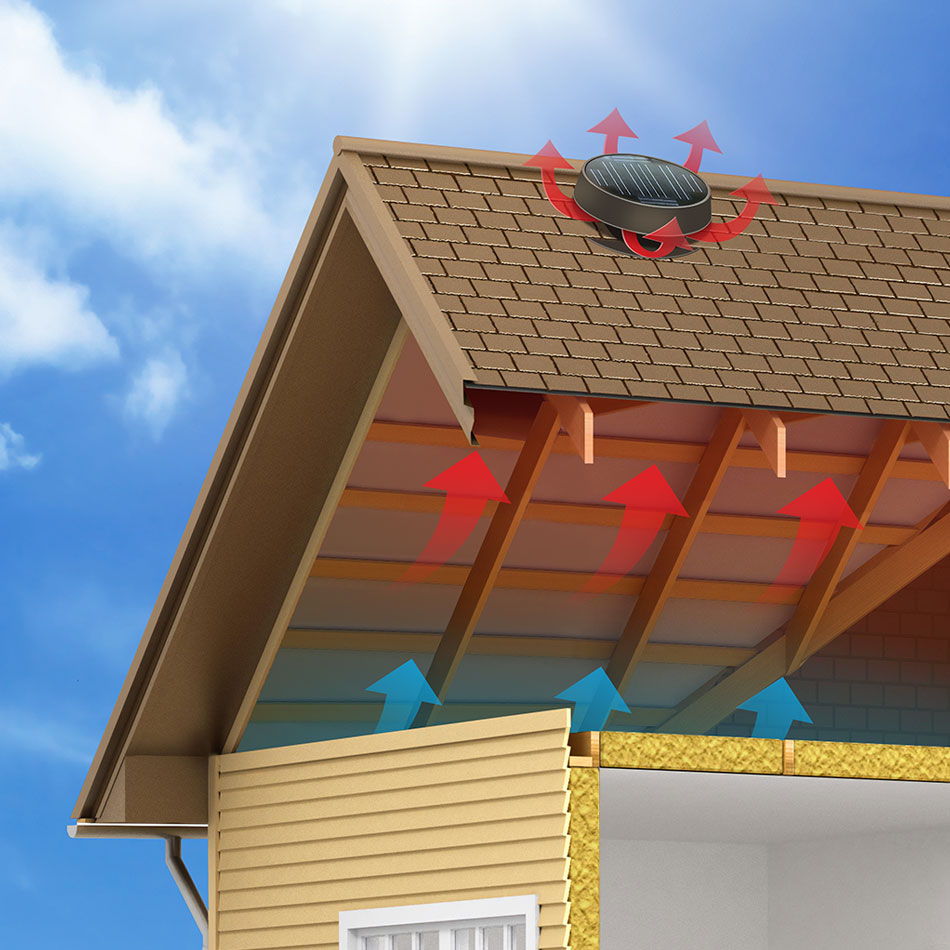
Attic Venting Key Concepts
Attic ventilation is an important aspect of maintaining the structure of your home as well as saving energy. Improper attic venting can lead to moisture buildup that can cause mold growth and also cause wood rot. The key to proper attic ventilation is to create continuous air circulation throughout the attic space while preventing moisture from entering. In an ideal venting system, air should enter the attic from the eaves or soffits and escape outside at the roofs ridge.
Solar Attic Fans Work With Your Existing Passive Vents
If you've ever been in your attic, you know just how hot the space can get, especially in summer months. The sun beats down on the roof surface and heats up the stagnant air inside the attic. Building codes require homes to have a passive vent system. But, passive ventilation does not provide the pressure needed to force the air through the attic and outside. That's where a motorized fan comes in. An attic fan placed at the roofs ridge will pull air in from outside, force it to move through the entire attic space and escape through the attic vent.
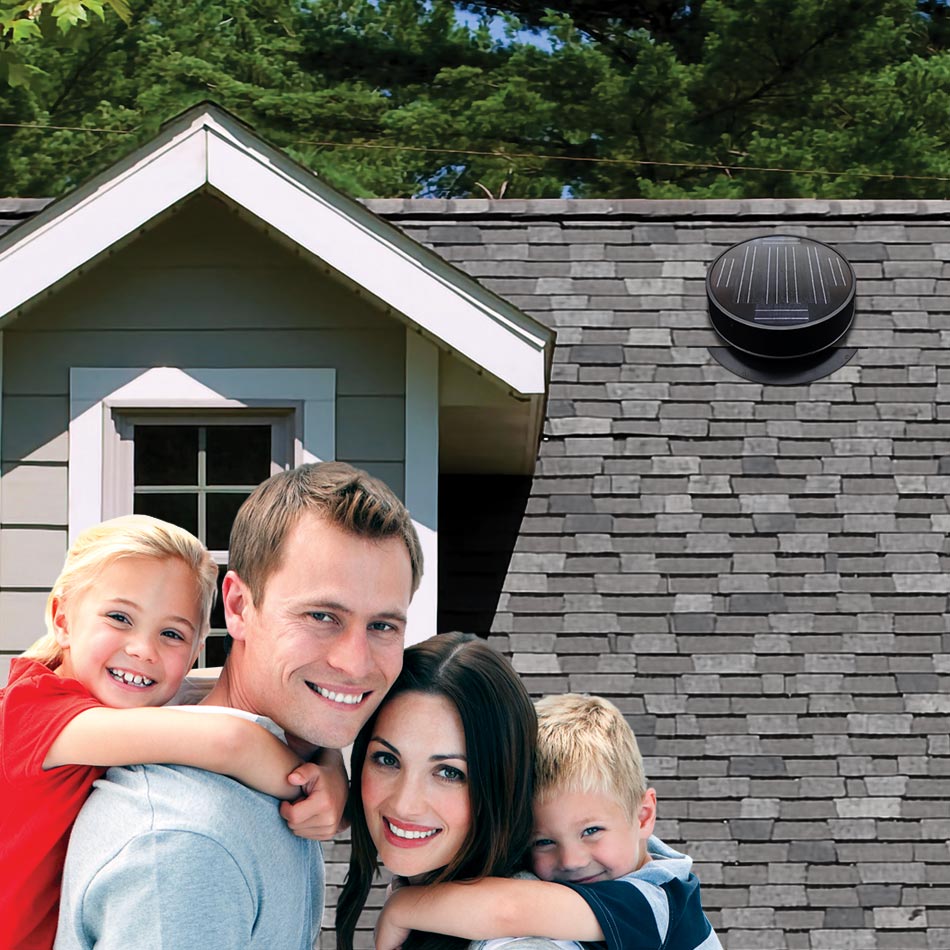
Smart, Eco-Friendly Home Solution
Solar attic fans are completely powered by free solar energy. Our fans are sleek, efficient, compact, quiet and powerful! Attic venting improves attic air circulation by pulling hot air and moisture out of your attic and therefore extending the life of your roof. In the summer, venting keeps your attic cooler helping reduce the load on your HVAC system. In the winter, it prevents moisture build-up and ice damming. Kennedy Solar Attic Fans are one of the best in their class with the highest standards for quality and functionality. We offer a Limited Lifetime Product Warranty - the best in the industry.
Solar Attic Fans Operate Using Free Solar Energy
A solar attic fan is a simple way to add a motorized venting system to your home without needing any extra electrical wiring or structural changes. Our solar attic fans are manufactured using high-impact PERC cell solar panels which power the fan for free during the day. The units are fully operation right out of the box and install in less than an hour. Kennedy Solar Attic Fans are available in 4 model sizes to accommodate any attic space - 32, 35, 48 and 65 watts. They are also available in 3 mounting types: roof, curb or gable. Learn how to estimate what size unit your home needs.
How Solar Attic Fans Work
Heat Builds Inside an Improperly Vented Attic
The sun beats down on a homes' roof and heats up the enclosed attic space. Passive vents, such as soffit or gable, allow some circulation but do not provide the pressure needed to force the hot air out of the attic.
Solar Attic Fan Provides Air Circulation
The solar panel collects sunlight on the roof and converts it into electricity to power the fans motor. Kennedy attic fans feature PERC technology which greatly improves solar cell efficiency and outperforms other solar panels.
Air Circulation Moves Hot Air Out of the Attic Space
The increased air circulation produced by the solar attic fan provides the pressure needed to force out the hot air from your attic. In the summer months, attic venting can cool your attic space by up to 40°F degrees!
Attic Venting Benefits
Adding a solar ventilation system to your home has numerous benefits including saving money on HVAC costs, extending the life of your roof, reducing moisture build-up and increases attic air-circulation.
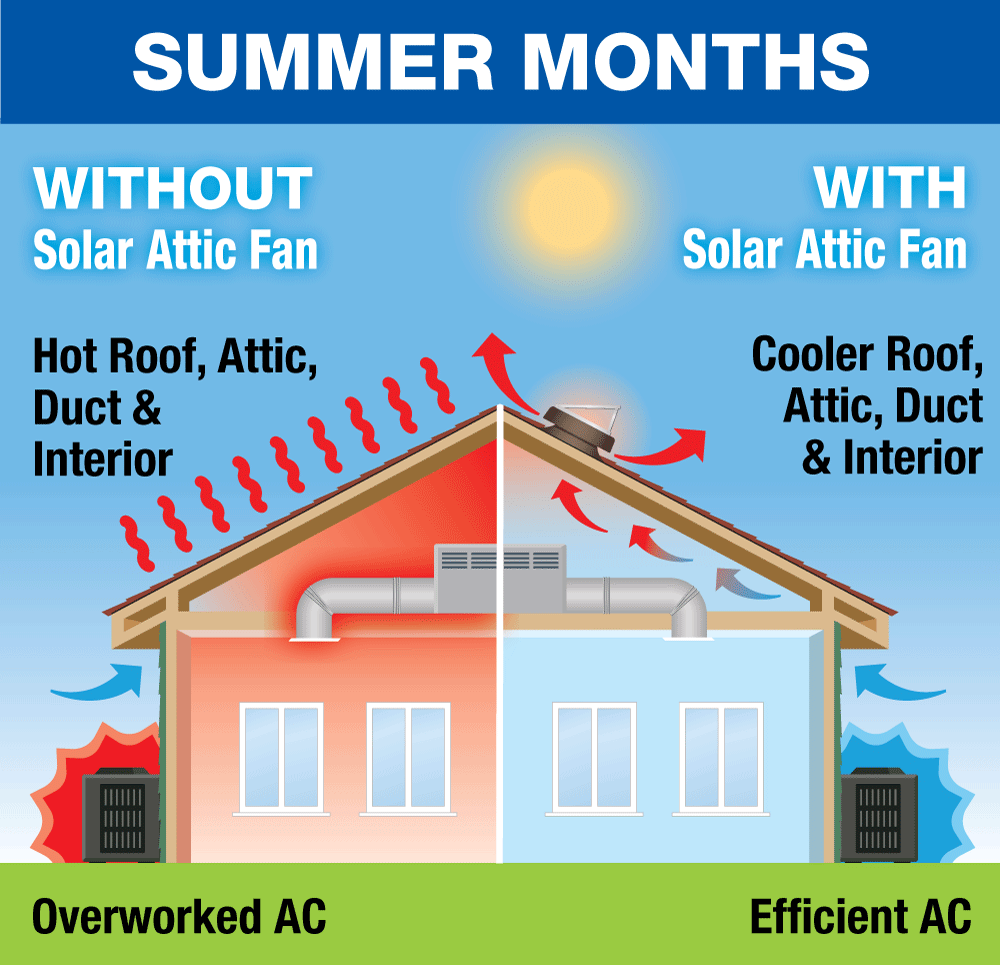
Reduces the Load on Your HVAC System and Extends the Life of Your Roof
The most obvious reason for attic ventilation is to lower the attic temperature during the warmer months. Attic temperatures can exceed 160°F during hot summer days. Proper attic ventilation can reduce those temperatures by up to 40°F. No matter how much insulation is in the attic, heat can still transfer into adjacent living spaces. In fact, extra insulation can actually add to temperature increases because heat is trapped in the insulation. Proper ventilation removes this excess heat build-up. Also, as the heat is exhausted, the workload of your air conditioning system is reduced, thereby saving energy costs and even extending the life of your air conditioning system.
Though asphalt shingles are designed to take the abuse of the sun for many years, they are subjected to greater temperatures when the roof decking is allowed to overheat, which is just what happens in an under ventilated attic. In fact, asphalt shingle manufacturers warranties require proper attic ventilation.

Reduces Moisture Build-up in the Attic
During the colder months, attic ventilation removes the warm, moist air that heat sources produce. Hot moist air lingering in the attic spaces can condense on the underside of the roof sheathing and cause rot. Moisture in the attic also causes mold to develop on the interior walls. Cold air in the attic space will not affect the temperature in the adjacent living spaces if properly insulated.
In the cooler months, moisture is the most serious concern. Even with the use of vapor barriers to keep moisture from entering the attic, there are air leaks around ceiling light fixtures and bathroom exhaust fans that allow unwanted moisture into the attic. Moisture condensing on the framing members and the inside of the roof deck can lead to the growth of mold, mildew and rot in the roof deck and framing. A good indicator of a moisture problem is rusty roof nails sticking through the roof deck. Installing a solar attic fan on your home is a simple, cost effective way to reduce moisture buildup in your attic.
A Model for Every Roof Type
Kennedy manufactures solar attic fans for all roof types and roof slopes for both residential and commercial applications.
Solar Attic Fan Installation
Do-It-Yourself Installation
If you are a handy do-it-yourself homeowner, you can easily do the job yourself! Installation requires basic DIY skills including using a reciprocating saw to cut a hole in your roof. Kennedy Solar Attic Fans were designed to be leakproof and maintenance-free. The most crucial part of the installation is attaching and sealing the flashing on the roof to ensure a weather-tight seal. Step-by-step illustrated instructions are available on our download page.
Hire A Pro
If you're not handy, consider hiring an authorized Kennedy Solar Attic Fan installer to assist with your installation. A perfect time to add a attic fan is when you are replacing your roof. Ask your roofer about adding an attic fan venting system to your home.
Tools Needed:
Caulking Gun, Caulk, Drill, Flat Bar, Hammer, Ladder, Marking Pencil, Measuring Tape, Nail, Reciprocating Saw, Safety Goggles, Screwdriver, Stud Finder, String, Utility Knife
Remote Panel Installations
There are some homes that have large trees or nearby buildings casting shadows over the perfect location to add a solar attic fan. Our remote panel model is the best solution for this situation. The solar panel is installed in a sunny location on the roof allowing the fan housing to be installed in the ideal location. View Remote Panel.
Installation Summary
The installation outline below is a summary of the steps involved. Please read the provided instructions and carefully follow the steps to ensure proper installation.
Cut Hole on Roof
- Choose sunny location on the roof - southern exposure recommended
- Measure and mark out a 19" hole
- Cut hole using a reciprocating saw
- Cut two slits on both sides of hole to allow unit to slide under shingles
Install Solar Attic Fan Unit
- Remove roofing nails or staples to allow unit to slide in place
- Using appropriate sealant, caulk underside of unit
- Slide unit into place
Adjust Solar Panel For Optimum Performance
- Attach unit to roof using provided screws
- Caulk around unit and over screws to ensure weather-tight installation and replace the shingles
- Adjust solar panel to position it will capture the most sunlight

